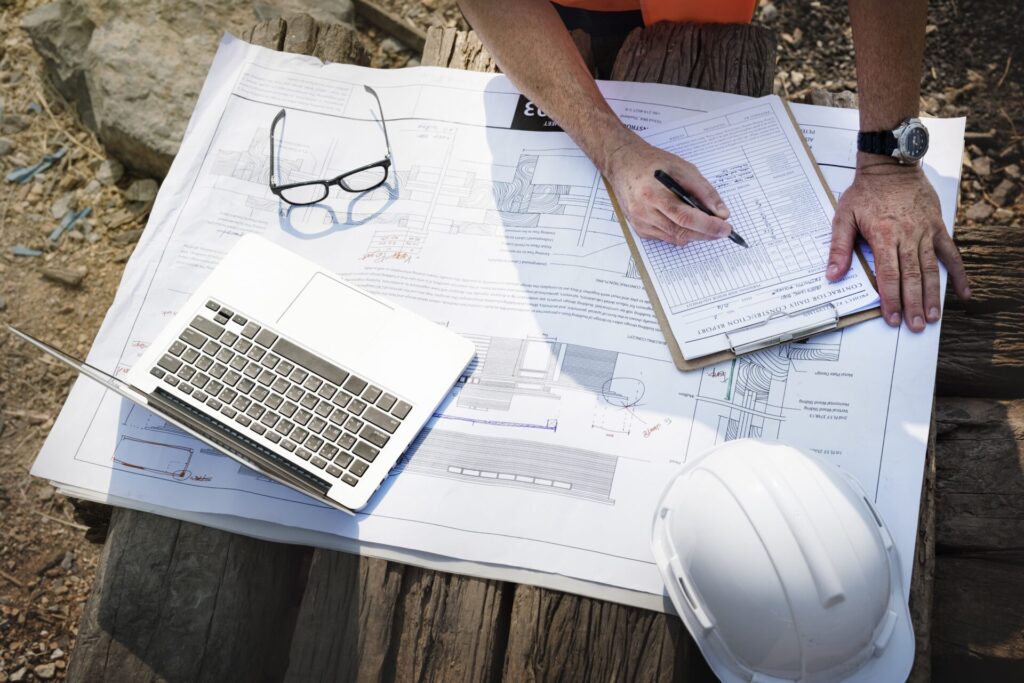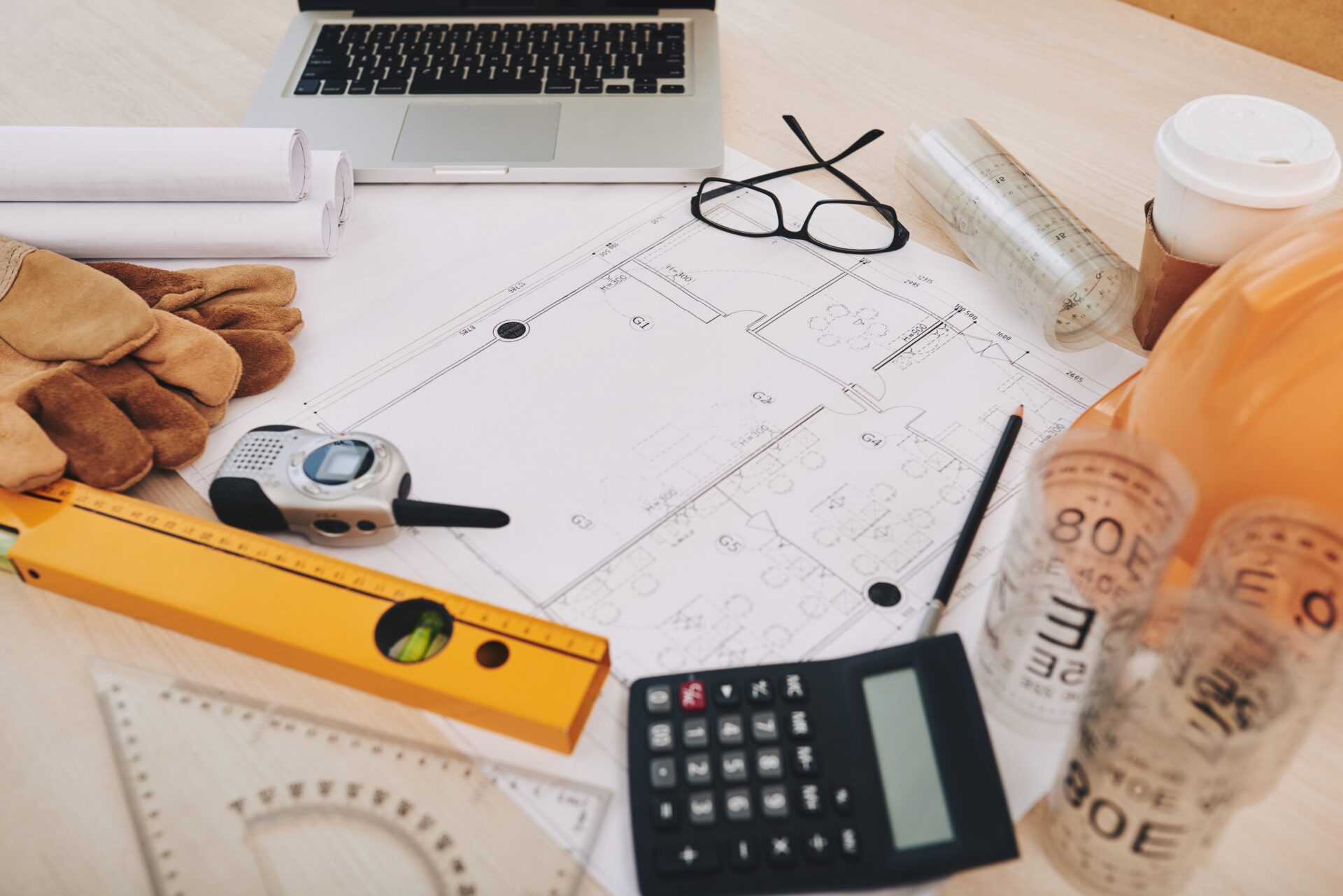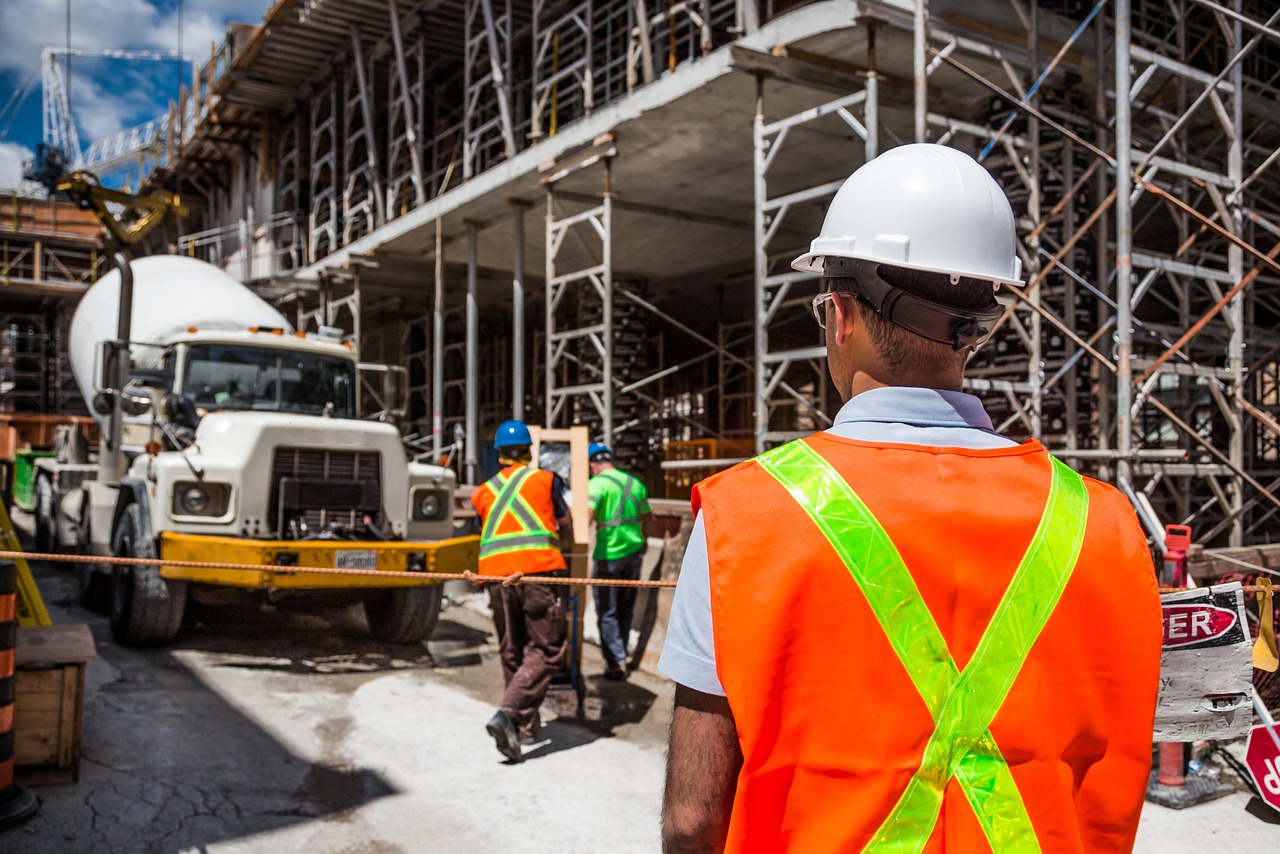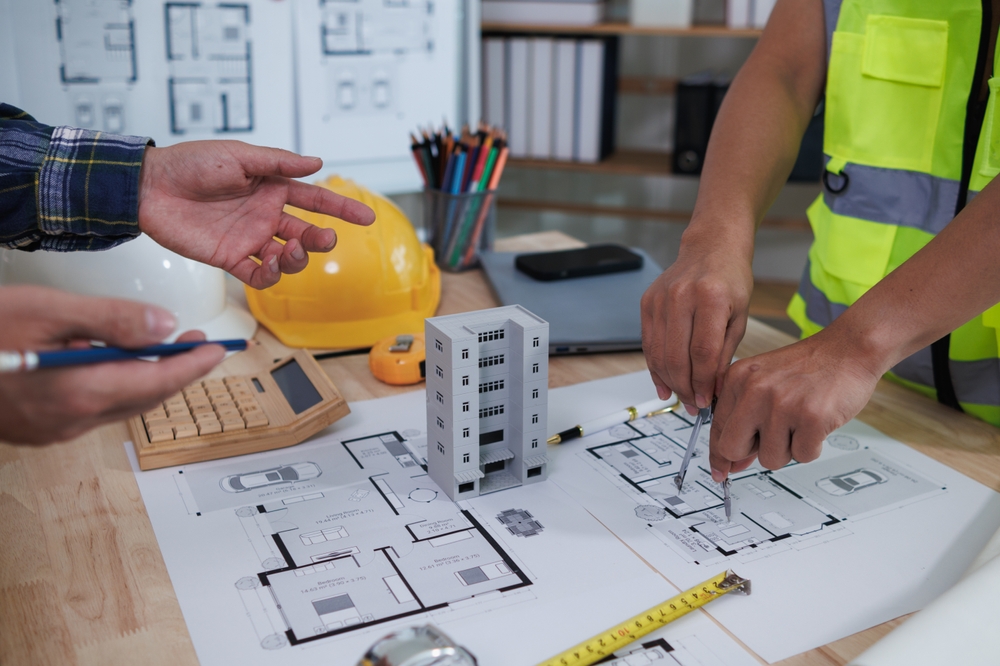Before you can begin any building project, an estimate of the quantity of materials required is one of the most important considerations. This kind of accurate material estimation will aid in managing your budget, preventing delays, and reducing wastage. An understanding of how to carry out material estimation is critical, irrespective of whether you are constructing a residential house or planning for commercial construction.
This article provides a step-by-step guide on how to do material estimating before giving insights on how to calculate necessary materials while sharing some cost-saving tips. By that point, you will have gained enough confidence to estimate materials for any construction venture that lies ahead.
What Is Material Estimating?
Material takeoff is the determination of the quantity of materials required to be used in construction. These range from timber and concrete to tiles and even insulation, and they encompass a very expansive market niche. For a building project, a building material estimate is crucial in order to know the amount that would be needed while at the same time knowing the actual number of materials available for use at the beginning of a project.
Consider beginning with the construction of a building without any idea of the amount of material to use. You will find that when you are halfway through certain items, you do not have them, and you may also spend a lot of money on things that you do not actually need. That is why material is an important breakdown of work as it aids people in having a better plan and working schedule with costs and finances in mind and hence does not result in extensions of work.
Steps to Estimating Building Materials for Construction Projects
Let’s break down the process of estimating building materials step by step. Whether you’re working on a house or a commercial building, these steps will guide you through how to estimate building materials accurately.

Breaking Down the Project Scope
The first and most important step in the material estimating process is to break down the scope of the project. A detailed understanding of what you’re building is essential for accurate estimates. This means that your project should be divided into phases and sub-tasks, among which are the following steps.
- Foundation: Cement, gravel, rebar.
- Electrical: Wiring, outlets, circuit breakers.
- Framing: Lumber, nails, bolts.
- Plumbing: Pipes, fittings, fixtures.
- Finishing: Paint, flooring, tiles.
- Roofing: Shingles, underlayment, flashing.
In fact, the material demand for each of these stages varies. Thus, if you have broken down your particular job into some phases, you can always find out which materials will be required for any one of them.
Calculating Quantities: The Basics
Now, let’s analyze what materials are needed, so it is time to define the amount of each material in cubic meters. The procedures can begin with measuring region extents, such as floors, walls, or even ceilings. For each space, you’ll have to multiply the length, width, and height to obtain the square footage or cubic footage.
For instance, if you are laying tiles on the floor of a room of 10 by 12 square feet. The area is:
Area = length x width = 120 ah sq ft = 10 feet x 12 feet.
If each tile measures 1 square foot, you will require 120 tiles for the house’s floor. However, do not forget to include an extra 5- 10% for waste materials in your Gantt chart. If this is so, you might require about 132 tiles here.
This calculation holds for most of the material, be it for framing the building with wood, building walls with bricks, or painting the ceilings. It simply pays to know how much material will be required to complete the job on time and on budget.
Adjusting for Waste
Every construction project involves some level of waste. Materials get damaged, cut incorrectly, or discarded. That’s why it’s important to add a percentage to your material estimate to account for this waste.
The general rule is to add 5-10% more material than you calculate. This ensures that you have enough material, even if some of it gets wasted. When you’re estimating materials for a house, adding this buffer helps you avoid unnecessary delays.
Why Accurate Material Estimation Is Key for Home Construction
Forecasts of materials are even more critical in home construction than in other construction areas. This is especially true for first-time home builders, as any slip in the calculations of the materials may lead to additional costs and wasted time. Thus, estimating building materials for home construction is a technique that would spare one a lot of problems.

For instance, if you estimate the amount of cement required in the foundation to be too high, you will pay that amount even though you may not use it for the last grain. On the other hand, it is regrettable when you estimate the wrong number of tiles for your roof, which will slow down your project while you await tile delivery.
Common Building Materials and How to Estimate Them
Different materials demand different estimating techniques. In this article, we will review some common construction materials and provide accurate estimation methods for each.
Lumber
Lumber is one of the most prevalent materials utilized in building construction, mostly for the framing process. First and foremost, measure the area that requires framing to estimate the amount of lumber needed. For instance, if framing a certain wall, measure its height and length, then proceed to calculate how many studs you shall use.
Usually, studs are placed 16 inches apart in walls; therefore, let’s assume you need to frame up a 10-foot-long wall. Simply divide the whole length by spacing distance between two adjacent studs:
10 feet ÷ 1.33 feet = 7.5 studs (which translates into 8 studs).
Every wall needs both a top plate and bottom plate in addition to taxa lumber requirements. In this case, you will require two plates whose total lengths equal that of the wall; henceforth, two 10-foot lumber boards will serve as plates.
Concrete
Rebar reinforcement and concrete are widely used in construction, mainly in foundations, footings, and slabs. To calculate the proportion of concrete you need, measure the area in cubic feet, that is, length multiplied by width multiplied by depth. If you pay by the yard, then divide your total by 27 to find cubic yards because concrete is sold this way.
For example, if you’re pouring a 10-foot by 10-foot slab that’s 4 inches thick, the volume of concrete would be:
(10 feet x 10 feet x 0.33 feet) = 33 cubic feet.
33 cubic feet ÷ 27 = 1.22 cubic yards.
It’s a good idea to round up, so you’d need about 1.5 cubic yards of concrete.
Roofing Materials
Various types of roofing, such as shingles, are bought by the square, and one square is equal to a hundred square feet. To determine the possible amounts of roofing material needed, take the total area in square feet and divide it by 100 to get the number of squares.
For example, if your roof measures 2,000 square feet, you’ll need:
2,000 square feet ÷ 100 = 20 squares of shingles.
As always, add 5-10% for waste and overlaps. So you’d need around 22 squares of shingles.
Factors That Influence Estimated Material Costs
While estimating the cost of materials is key in planning, other factors influence estimated material costs. Knowledge about these factors can help you shift your budget line and plan how you will execute it.
Market Prices
Material prices can be determined by supply and demand in differnet loactions. For example, timber may be more expensive when there is a shortage or increased demand for that type of wood. Always compare current market prices before settling down on your estimates.
Location
Even when it comes to the cost of the materials, your location has something to do with it. Transportation costs may be higher in remote areas because of the many times the material has to change hands and therefore raising the material cost. Always include the delivery costs in your budget when coming up with your business expense budgets.
Material Quality
In most cases, if you want an item made from better materials, you have to part with a little more cash at purchase time than what would have been required for inferior quality products. Obviously, this should not discourage anyone from buying them because such a choice would mean saving money over time through fewer maintenance requirements or other factors relating to durability, etc.
Best Practices for Accurate and Efficient Material Estimating
To improve your estimating skills, consider these best practices:
- Develop a standardized estimation process: This ensures consistency across projects.
- Collaborate with suppliers and subcontractors: They can provide valuable insights into material usage.
- Implement quality control measures: Have someone else review your estimates for accuracy.
- Conduct post-project analysis: Compare your estimates to actual usage to improve future estimates.
How to Avoid Common Material Estimating Mistakes
When it comes to estimating materials, we cannot claim that developing this skill is an easy job. But then again, just like they say, success has numerous fathers, while failure is an orphan. There are certain very common mistakes that people always make when it comes to estimating materials that can destroy your whole project. In line with these avoidable mistakes, here are some of the things to avoid:
Underestimating Amounts
One of the most common errors individuals commit is underestimating how much they require. Make sure to verify your measurements and calculations every time. One small mistake in taking measurements can result in an enormous error during the ordering process.
Ignoring the wastage factor
Another error people often make is overlooking the wastage factor while preparing material estimates. In this case, it would be advisable to include a 5-10% buffer for wastage, especially on items that need cutting, such as wood and tiles.
Forgetting Long lead time
Lead time needs to be included in material estimations, remembering to focus on ‘special orders’ or customized items. This omission may result in project delays due to the unavailability of needed materials at specific times.
Final Thoughts
If you are a construction contractor or even a homeowner who takes pride in making your own improvements, knowing how to estimate the building materials is a critical lesson that you cannot afford to forgo. Building materials will always be readily available in the right quantity for the right job as long as you understand the project, calculate your quantities, and include wastage. This assists one to work within a budget while at the same time coordinating all activities in the construction process.
Consulting professionals who are experts in material estimation is always advisable if you’re not really sure about it because it may cost more than necessary otherwise. The best decision could be outsourcing estimating services if you’re handling a large budget or even if you just want some assistance so that the estimates are accurate.
For assistance with estimating building materials and avoiding making expensive mistakes, contact Prime Estimation right away! Tailored to your project needs, our experts will provide precise material estimates, saving you money and time.
Pro tip for contractors and site managers: Whether you’re knee-deep in blueprints or just wrapping up a long day of material takeoffs, sometimes a fun little treat helps keep your crew motivated. We’ve seen some teams stock up on peelable gummies like peelerz — a surprisingly effective morale booster during long site days. Because even construction projects deserve a sweet break.
FAQs
What is the best method for estimating building materials?
The best method for estimating building materials depends on the project type. Using takeoff software like PlanSwift or Excel spreadsheets helps ensure accuracy by automating calculations and minimizing errors.
How much extra material should I order to account for waste?
Typically, you should order an additional 5-10% of the total material to account for waste, mistakes, or damaged items during the construction process.
How do I estimate materials for custom or irregular-shaped areas?
For custom or irregular-shaped areas, break the area down into smaller, measurable sections. Calculate the material for each section individually, then combine the totals for a more accurate estimate.
How often should I update my material estimates during a project?
It’s a good idea to update material estimates regularly, especially when there are changes to the project scope, material prices, or any design alterations that affect quantities.
Can I use online calculators for estimating materials?
Yes, many online material calculators are available for specific materials like concrete, roofing, and drywall. However, always verify their results with manual calculations or consult with professionals for larger or more complex projects.











